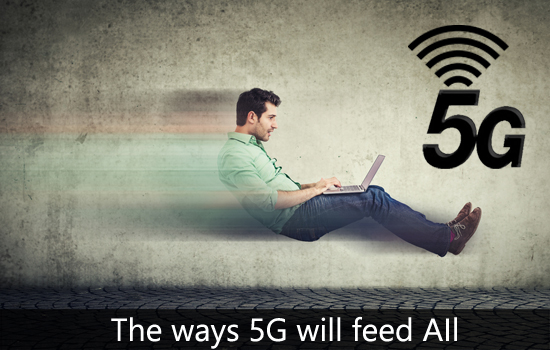An incredible 85% of Americans already use Artificial Intelligence (AI) every day, whether they know it or not. Many don’t realize that the products they use and the AI they take for granted, have reinforced each other as their importance has grown. The nature of cloud-based solutions is that they lend themselves to the development of effective AI software. To find the sort of fuzzy logic patterns that AI solutions do, enormous data sets are needed. Generally, those datasets are available in the cloud.
In the next 2 years, the SIM Only plan you buy for your iPhone will come with 5G, not 4G data. 5G is between 10 and 100 times faster than existing 4G standards. The ramifications of this new generation of mobile data are significant. 5G will feed the cloud and, as we’ve seen, cloud datasets feed AI.
Voice assistants not that good at the moment – AI might help add context to conversations
The primary consumer interface to AI solutions is probably Voice Assistants> Whether it’s Google Home, Siri or Alexa, many homes already have a Virtual Assistant listening to everything they say. Unfortunately, they don’t always interpret your commands successfully. 5G could change that.
Bob Rogers, Chief Data Scientist at Intel says 5G could improve Voice AI’s voice recognition functions, for the first time, allowing the all-important ‘context’ to be considered. Context, it seems is one of the key components that conversations with technology are missing, which humans take for granted.
If you’re in a car dealership, for example, ‘Jaguar’ is far more likely to mean a quintessentially British sports vehicle. If you’re in the jungle, the same word might mean something far more dangerous. The problem is that voice assistant don’t have the context as part of their programming. In simple terms, the increased bandwidth that 5G operates means it will be able to communicate more of the sound surrounding the user than is currently transported. That means it could pick out different voices in the house, sounds in the background (are we in a dealership or the jungle?) and filter, for example, noise which might be standing between multiple locations – like the TV in the background – for elimination.
Swarm computing
5G could also assist AI solutions to get autonomous cars to their destination more quickly. One method they’ll use is called ‘swarm’ computing, another AI feature that will benefit greatly from 5G.
In classic driving conditions, each car makes it’s own decisions, according to traffic rules to get their occupants to their destination. Swarm computing uses technologies like 5G to communicate between vehicles which coordinate their actions as a group to improve the efficiency with which the whole body of traffic moves.
Currently, autonomous cars rely on the computers they have on board to make the decisions they need to. In the future, enabled by the superior data transmission capabilities of 5G will be able to engage with other cars, streetlights, and even pedestrians. One of the new features of 5G networks is that they allow millions or concurrent, parallel connections. 4G, for example, maxed out at less than 500.
Two layered AI
That’s a 2 layer AI solution, enabled by 5G. A swarm of cars managed by a city. It doesn’t stop there. 5G will feed AI at multiple levels, providing so many connections, to so many live devices, each of which is transmitting huge amounts of data to the cloud which can then be analyzed to deliver better customer experienced.
Summing up 5G and AI
Voice Assistants and cars are just two examples. Our world is being digitized and moved to the cloud.
As services which typically resided offline – like TV, Newspapers, Music and Radio all find themselves digitized end to end, they have ended in the cloud, too. It’s these things that we take for granted. 10 years ago, you probably watched a few terrestrial TV channels. Now, you watch a lot of Netflix (which has an AI based recommendations engine at it’s heart). Before, you bought CDs, now, you use Spotify (which also has an AI based recommendation component.) Next will be cars and voice assistants and beyond that health records and everything else.
The result will be billions of devices on the internet, connected in parallel to 5G networks, providing massive amounts of data – which is analyzed by AI.


